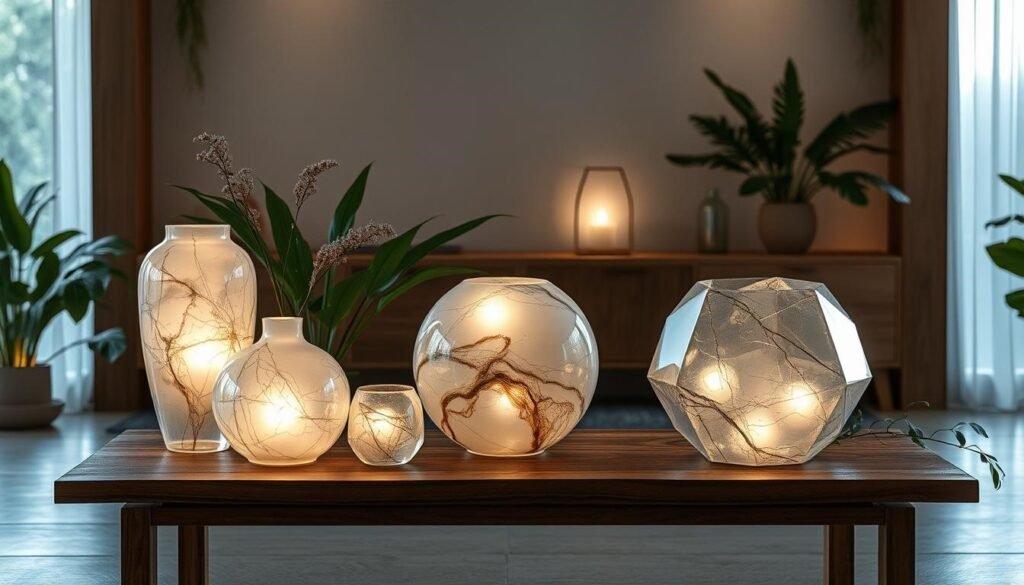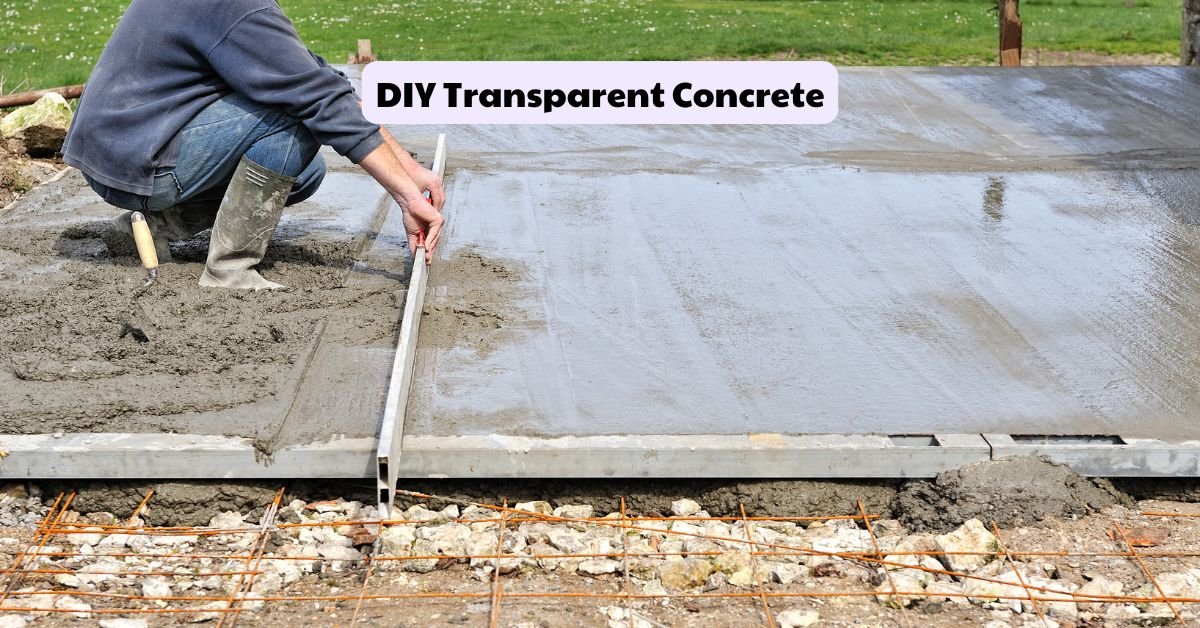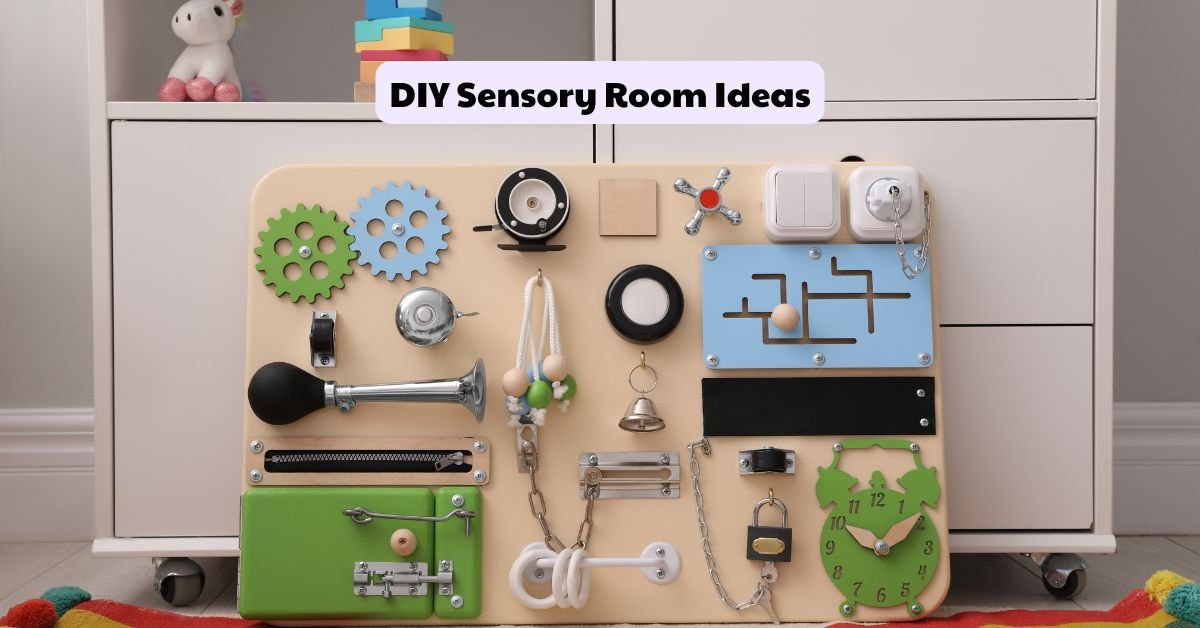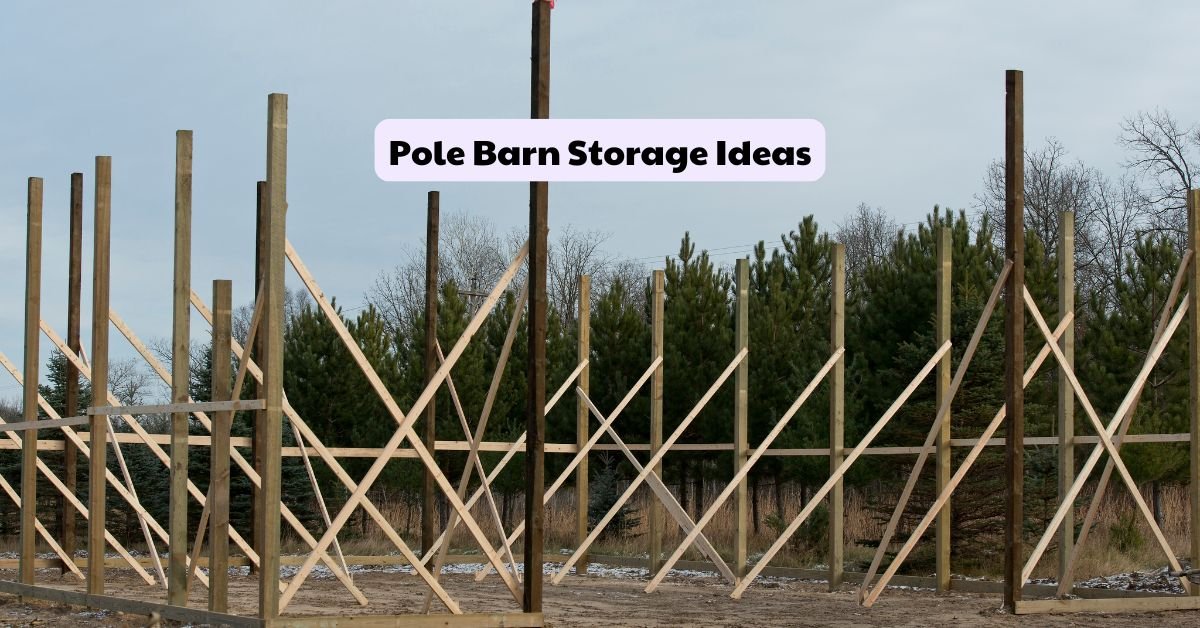DIY Transparent Concrete – Create Your Unique Decor
Imagine making your living space look amazing with a material that’s both strong and beautiful. Transparent concrete is this new wonder material. It lets you make decor pieces that shine through the light, making them stand out.

If you love DIY projects, you can now try making light-transmitting concrete at home. This guide will show you how to make beautiful transparent concrete items. You can start with small things or even big architectural pieces.
Learning to make transparent concrete opens up a world of creativity. This material is really versatile, and you can add a modern touch to your home’s look or make outdoor features that catch the eye.
Key Takeaways – DIY Transparent Concrete
- Transparent concrete combines strength with light-transmitting properties
- DIY projects allow for unique, personalised decor creations
- Light-transmitting concrete suits both interior and exterior applications
- The material offers a blend of functionality and aesthetic appeal
- Creating transparent concrete at home is an accessible and rewarding process
Understanding Transparent Concrete – A Revolutionary Building Material
Transparent concrete, also known as translucent cement, is a new material that is changing modern architecture. Thanks to optical fibres, it combines the strength of regular concrete with the ability to let light through.
What is Transparent Concrete?
This material is a blend of fine concrete and optical fibres. The fibres let light through, making it look unique. The fibres are arranged in the mix before it hardens to make see-through concrete blocks.
The Science Behind Light-Transmitting Concrete
The magic of fibre optic concrete comes from its makeup. It has thousands of optical fibres running side by side. These fibres carry light from one end to the other, making the concrete look translucent.
Applications of Transparent Concrete in Modern Architecture
Architects and designers love transparent concrete for its special features. It’s used in:
- Illuminated sidewalks and pathways
- Light-transmitting walls in buildings
- Artistic installations and sculptures
- Energy-efficient structures that use less artificial light
This material’s versatility is opening up new design possibilities. It combines beauty with practicality in ways not seen before with traditional materials.
The Benefits of Using Transparent Concrete in Home Decor
Transparent concrete, also known as glass or optical concrete, brings strength and beauty to your home. It lets light through, making your living areas look amazing. This material changes how you see your home.
Using crystal concrete connects indoor and outdoor spaces. It can be used for walls or floors, bringing more natural light into dark spots and making your home feel brighter and more welcoming.
Transparent concrete is also great for saving energy. It lets in more light, so you use less artificial lighting during the day. This cuts down your energy bills and makes your home feel more natural.
Optical concrete is versatile for many home decor ideas:
- Accent walls that create a stunning focal point
- Illuminated countertops for a modern kitchen
- Unique flooring that adds depth to any room
- Custom-made furniture pieces for a conversation starter
Glass concrete is also durable and easy to maintain. It withstands daily wear and tear, keeping your decor looking great for years.
| Feature | Benefit |
| Light transmission | Enhanced natural lighting |
| Strength | Durable and long-lasting |
| Versatility | Suitable for various applications |
| Energy efficiency | Reduced electricity costs |
Adding transparent concrete to your home decor makes your space modern and unique. It beautifully combines functionality with artistic flair.
Essential Materials for DIY Transparent Concrete Projects
Starting your own DIY transparent concrete project can be thrilling. First, you need to collect the right materials. Let’s look at what you’ll need to make luminous cement and fibre optic concrete at home.
Choosing the Right Cement Mix
The first step is picking the right cement mix. Go for a fine-grain cement powder for a smooth finish. White cement is ideal for letting light through. Mix it with sand and water to start your project.
Selecting Appropriate Optical Fibres
Optical fibres are key for fibre optic concrete. Pick fibres that are 0.5mm to 2mm thick. Make sure they’re the right length for your project. Spread them out well for the best light effect.
Additional Tools and Equipment Needed
You’ll also need some tools for your DIY transparent concrete project:
- Moulds or forms
- Mixing bucket
- Trowel
- Protective gear (gloves, goggles)
- Polishing tools
| Material | Purpose | Quantity (for small projects) |
| White cement | Base material | 5 kg |
| Fine sand | Aggregate | 10 kg |
| Optical fibres | Light transmission | 500-1000 pieces |
| Water | Mixing | 2-3 litres |
With these materials ready, you’re set to start your DIY transparent concrete project. Remember, success comes from careful preparation and mixing your ingredients well.
Step-by-Step Guide to DIY Transparent Concrete
Making your transparent concrete at home can be a fun project. This guide will show you how to easily make light-transmitting concrete.
First, prepare your mould. Make sure it’s clean, and apply a release agent. Then, mix the cement according to the instructions. For translucent cement, add optical fibres.
Put a thin layer of concrete into the mould. Place your optical fibres in the pattern you want. Keep adding concrete and fibres until the mould is full. Tap the mould gently to get rid of air bubbles.
- Allow the concrete to set for 24 hours
- Remove the concrete from the mould
- Cut excess fibres flush with the surface
- Polish the surface for a smooth finish
Finally, cure the concrete. Cover it with a damp cloth and a plastic sheet. Keep it moist for seven days to strengthen it.
| Material | Quantity | Purpose |
| Cement | 5 kg | Base material |
| Optical Fibres | 500 m | Light transmission |
| Water | 2 L | Hydration |
| Sand | 10 kg | Aggregate |
With patience and care, you can make beautiful light-transmitting concrete for your home.
Creating Unique Patterns with Fibre Optic Concrete
Fibre optic concrete lets you make fantastic light patterns for your DIY projects. It mixes concrete’s strength with light transmission’s beauty. This way, you can make unique decor pieces.
Design Considerations for Light-Transmitting Patterns
Think about the design and purpose of your light-transmitting concrete project. Consider the size, shape, and where it will go. Will it stand alone or be part of a building? Choose a pattern that fits well with the area and makes it look better.
Techniques for Embedding Optical Fibres
Putting optical fibres in concrete needs precision and care. First, make a mould for your project and arrange the fibres as you want. Then, secure them in place before adding the concrete mix. Make sure the fibres are spread out evenly for a nice light effect.
Achieving Different Light Effects
With optical concrete, you can experiment with various lighting effects. You can change fibre densities for subtle or strong patterns, adjust fibre lengths for depth in your design, or use coloured lights to make your fibre concrete pop.
| Effect | Technique | Result |
| Starry Night | Scattered thin fibres | Twinkling light points |
| Geometric Patterns | Arranged thick fibres | Bold light shapes |
| Gradient Effect | Varied fibre density | Light intensity transition |
Enhancing Your DIY Transparent Concrete with Exposed Aggregate
Boost your DIY transparent concrete projects with exposed aggregate. This mix of crystal concrete and exposed aggregate looks amazing. It adds depth and texture to your see-through concrete blocks.
Begin by mixing your transparent concrete as you normally would. Let it set a bit. Then, wash away the top layer of cement to show the decorative aggregates below. This makes your finished product look unique, combining transparency with texture.
Choose aggregates that match your design:
- Coloured glass pieces for a vibrant, light-catching effect
- Polished river stones for a natural, earthy look
- Metallic fragments to add sparkle and shine
The size and density of your aggregates will affect how much light your crystal concrete lets through. Try different mixes to achieve the right balance of transparency and texture.
| Aggregate Type | Effect on Transparency | Visual Impact |
| Fine gravel | Minimal reduction | Subtle texture |
| Coloured glass | Moderate reduction | Vibrant, light-refracting |
| Large pebbles | Significant reduction | Bold, natural appearance |
Using exposed aggregate with transparent concrete creates unique decor pieces. These pieces showcase the best of both worlds: the mesmerising light transmission of crystal concrete and the feel of exposed aggregate surfaces.
Troubleshooting Common Issues in DIY Transparent Concrete Projects
Creating DIY transparent concrete can be tricky. You might face some challenges along the way. Let’s explore common problems and their solutions to help you achieve stunning results with your optical concrete projects.
Dealing with Air Bubbles and Voids
Air bubbles can ruin the look of your light-transmitting concrete. To avoid this, mix your concrete well and pour it slowly. Use a vibrating table or tap the mould gently to get rid of trapped air. If bubbles don’t go away, try using a special additive to reduce air.
Addressing Fibre Alignment Problems
Getting the fibres in your concrete right is key. Misplaced fibres can block light. Use a comb or a special tool to put the fibres in the right spot before pouring the concrete. Making a template can help you place the fibres correctly for even results.
Fixing Surface Imperfections
Surface flaws can spoil the look of your optical concrete. Sand the surface with fine-grit sandpaper to smooth out small imperfections. For bigger flaws, apply a thin layer of cement slurry and polish once dry. Remember, practice makes perfect with DIY transparent concrete!
By tackling these common issues, you’ll be on your way to making beautiful light-transmitting concrete pieces for your home.
Innovative DIY Transparent Concrete Decor Ideas
Transparent concrete opens up a world of possibilities for unique home decor. This luminous cement lets you make stunning pieces that mix functionality with artistic flair.
One exciting project is making illuminated countertops. By putting optical fibres into kitchen or bathroom surfaces, you get a mesmerising glow, turning ordinary spaces into extraordinary ones.
Light-transmitting room dividers are another creative idea. These panels provide privacy but let natural light through, creating an airy feel in your living areas.
For a striking focal point, consider making decorative wall panels. These can showcase intricate patterns or abstract designs, adding depth and visual interest to any room.
| DIY Project | Difficulty Level | Materials Needed |
| Illuminated Countertop | Advanced | Cement mix, optical fibres, LED lights |
| Room Divider | Intermediate | Cement mix, optical fibres, frame |
| Wall Panel | Beginner | Cement mix, optical fibres, mould |
Remember to explore transparent concrete in smaller decor items, too. Make unique lamp bases, coasters, or even luminous stepping stones for your garden path. The possibilities are endless when you mix creativity with this innovative material.
Maintenance and Care for Your Transparent Concrete Creations
Looking after your transparent concrete projects right will keep them looking great for a long time. This guide will show you how to keep your crystal concrete and light-transmitting concrete looking new.
Cleaning and Polishing Techniques
To keep your transparent concrete shining, use gentle cleaning methods. Clean it with a soft cloth and a mild soap solution to get rid of dust and dirt. For tough stains, a pH-neutral cleaner might be needed. Use a microfibre cloth to polish your crystal concrete and make it shine.
Protecting Your Transparent Concrete from Damage
Protect your light-transmitting concrete from damage. Use a sealer to keep out moisture and stains. Put felt pads under furniture to stop scratches. Don’t use harsh chemicals that could harm the surface.
Repairing Minor Imperfections
Fix small problems quickly to keep your transparent concrete looking good. Use clear epoxy to fill in tiny cracks. For bigger chips, find a concrete patch that matches your crystal concrete’s colour. Sand the area gently to make it blend in with the rest.
| Maintenance Task | Frequency | Tools Needed |
| Routine cleaning | Weekly | Soft cloth, mild soap |
| Polishing | Monthly | Microfibre cloth |
| Sealing | Annually | Penetrating sealer, applicator |
| Inspection for damage | Quarterly | Magnifying glass |
Follow these care tips to keep your transparent concrete looking stunning. It will be a beautiful feature in your space for years, showing off the unique look of light-transmitting materials.
Comparing DIY Transparent Concrete to Professional Options
When looking at DIY transparent concrete, it’s key to compare it with professional options. Doing it yourself can be rewarding, letting you create unique designs at a lower cost. You can play with different patterns and shapes to match your space exactly.
Professional concrete, however, offers top-notch quality and consistency. It uses special tools and methods to ensure even light transmission and strength. This choice might cost more, but it can save you time and hassle, especially for big or complex jobs.
Your decision between DIY and professional concrete depends on your skills, budget, and the size of your project. DIY is great for small decorative items or highlights, while professional concrete is better for big architectural pieces or things that need to hold weight. Think about what you need and what you can do before starting your project.




